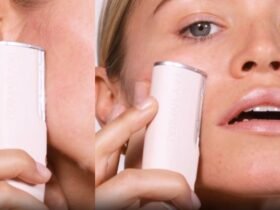Many people develop small, soft growths in areas like the neck, underarms, or thighs without realizing why. One of the most overlooked causes is something as simple as everyday clothing rubbing against your skin. In fact, dermatologists often point to skin tags from friction as one of the most common patterns, especially in people who wear tight or synthetic fabrics.
Read Why Do Skin Tags Happen and What Causes Them Naturally
How Skin Friction Triggers Skin Tags
Skin tags are harmless, non-cancerous growths made of collagen and blood vessels trapped inside a layer of skin. While genetics, hormones, and metabolic issues play a role, friction is a direct physical trigger—especially when skin constantly rubs against itself or against fabric.
Here’s how it happens:
- Repeated friction causes mild inflammation and irritation.
- The skin responds by forming extra tissue to protect itself.
- Over time, this extra tissue turns into a flesh-colored tag.
This is particularly common in skin folds and areas of regular motion, such as the underarms, groin, bra line, and neckline.
Common Friction Points on the Body
You’re more likely to get skin tags in areas where:
- Skin rubs against skin (e.g., inner thighs, under breasts)
- Clothes press tightly (e.g., collars, waistbands, bra straps)
- Moisture and heat are trapped (e.g., armpits, groin)
People who wear tight shirts, ill-fitting bras, chokers, or rough fabrics may notice more tags along the neck, shoulder line, or underarm area.
Read Can Hormones Trigger Moles and Skin Tags? Here’s What Science Says
Risk Factors That Increase Friction
Certain conditions or habits make skin friction worse:
- Obesity – More skin folds = more rubbing points
- Excess sweating – Adds moisture, which increases skin irritation
- Tight clothing or undergarments – Constant rubbing and pressure
- Synthetic fabrics – Trap heat and worsen skin abrasion
Even long walks, exercise routines, or backpack straps can trigger irritation that leads to tag formation over time.
How to Prevent Skin Tags from Friction
You can reduce your chances of developing friction-related tags by:
- Wearing loose, breathable clothing
- Choosing cotton or moisture-wicking fabrics
- Avoiding tight collars, waistbands, and underwire bras
- Applying anti-chafing powders or barrier creams in high-friction zones
- Keeping skin dry, especially in folds
Maintaining a healthy weight and moisturizing skin daily also helps reduce the friction load on delicate areas.
Skin tags may seem like random skin quirks, but in many cases, they’re the body’s reaction to consistent rubbing and irritation. If you’re seeing new tags pop up along the neck, underarms, or waistline, your clothing might be part of the problem. Understanding the connection between skin tags from friction and your wardrobe can help you make simple changes to avoid further irritation and prevent new tags from forming.















Leave a Reply
View Comments